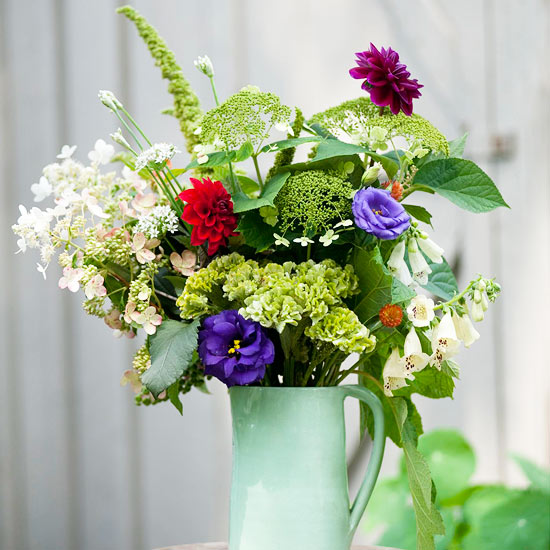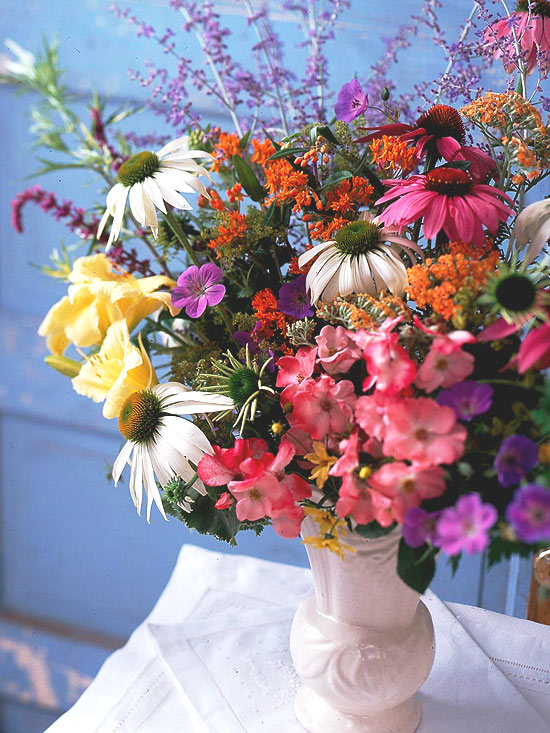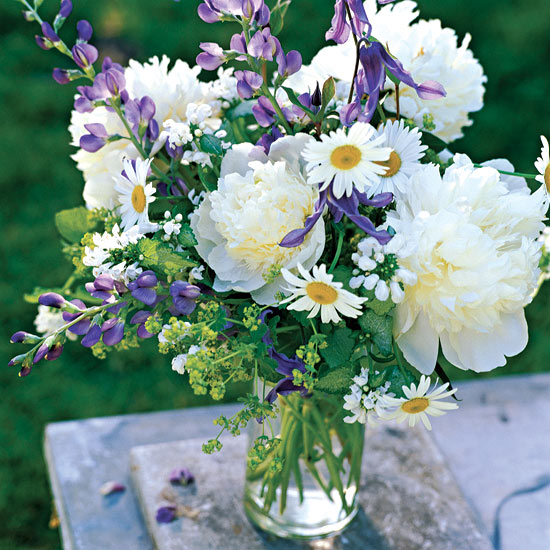






Lush flowerbeds overflowing with colorful blooms make you want to snip a few stems and take them inside. But you may be reluctant to plunder your garden, afraid you'll leave bare spots. Hesitate no more. Here are two strategies for producing plenty of cuttable flowers without destroying the look and style of your garden
1. Plant a cutting garden. With a designated cutting bed, you can plant and cut without worry. Select an inconspicuous location -- along a garage or in a back corner of your yard -- and be sure your cutting bed benefits from lots of sun and rich, well-drained soil -- just like your other beds. A cutting bed offers plenty of planting freedom. Its sole purpose is to produce flowers for you to cut, so don't worry about how it will look. You can mix and match colors, textures, heights, and varieties. Plant all your favorites.
2. Keep it simple. Make the bed simple to weed, feed, and cut by planting the flowers in rows. You might even make your cutting garden part of an existing vegetable or herb garden. The crop-style planting will blend right in, and your "production" gardens will be in one location. If you don't have gardening space to spare, spread cutting flowers throughout your existing beds; don't cluster them.
Plant the best perennials for cut-flowers.

3. Plan ahead. Planning will help you avoid creating gaps if your scissors do get too much exercise. Draw your existing beds on paper, noting varieties, bloom times, and heights. Then pencil in the flowers you want to cut. Use bloom cycles as your guide to create a mix.
4. Mix and match. Plant a balanced mix of perennials and annuals. Your favorite perennials will come back year after year, while annuals will let you experiment. Both types make excellent cut flowers. The more colors, heights, and textures you grow, the more fun you can have creating indoor arrangements.
5. Don't limit yourself. Use flowering hedges, aromatic herbs, and plants with interesting foliage to add pizzazz to your arrangements.

Copyright © www.100flowers.win Botanic Garden All Rights Reserved